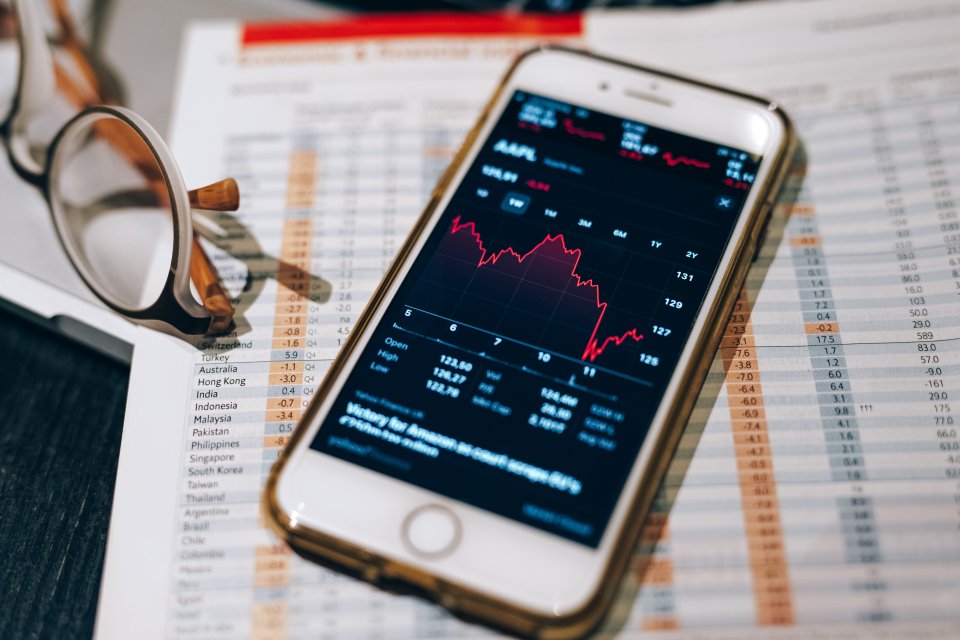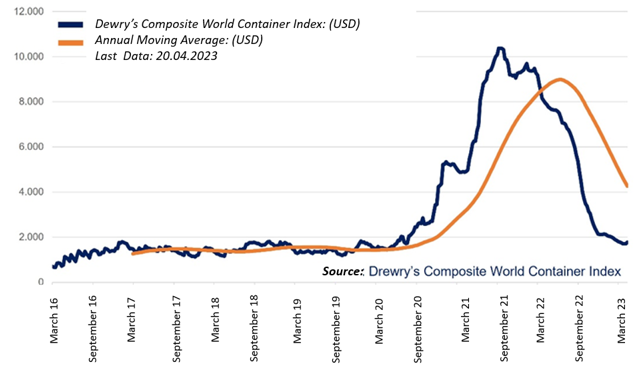
Is the Container Freight Rate Index at its lowest point? The market has been debating this for the past few days.
So what is triggering this debate? The April 20, 2023 release of the Dewry’s Composite World Container Index. The index broke (significantly) upwards after the 82-week series of declines that began at 10,000 points: rising from 1,709 to 1,774.Could the bell curve movement be complete? Could a 4 percent increase in just one week be a change that needs to be focused on?
When we look at the specifics, we can see that the factor driving the index up is transportation from Shanghai. The Shanghai-New York line, in particular, increased by 12 percent, evoking memories of the Pandemic. On the other hand, the decline in the index continues in shipments from Europe to the United States, with China as the final destination.

What then might be the reason behind this asymmetrical picture? Some claim that container ships are slowing down, even slower than during the pandemic. A decrease in speed can reduce the carrying capacity and cause an increase in the freight rate index. But isn't it also interesting that ships only reduce speed on cruises departing from China? This cannot be the only reason for this whole image. Another factor might have been the strike of dockworkers in Los Angeles and LongBeach. Undoubtedly, strikes can increase the freight rate index by prolonging the waiting at the ports.
When we look at the issue from the perspective of the carriers, we can see that they want the freight rate index to rise. Indeed, we must not lose sight of the fact that carriers are beginning to scramble to push the freight rate index up.
This reflex of the carriers may be a sign that the index may rise in the future! Alphaliner data also supports this. The fleet may gradually begin to include container ships that are waiting at anchor in anticipation of a rise in the freight index. In my opinion, carriers do not want the index to fall below 1,700 levels. Because six of this value means returning to the pre-pandemic era. But the prices/costs were not that high at that time.
The truth is that once the index hits lowest point, there is only one direction it can go; up! If these levels are bottom, it is inevitable that it will go up.
At this point, it may be appropriate to bring up a popular financial theory: herd behavior. Market momentum can be used to express herd behavior in financial markets. If there is a clear interest/opinion that the freight rate index will rise, freight rates will reflect this. Carriers may want to act ahead in order to avoid being caught up in the upward momentum of the index.
If you remember, the demand for long-term freight rate contracts decreased during the period when index activity increased. At the moment, with concerns that the index will go up, carriers are likely to prefer long-term contracts. This type of herd behavior can be another factor that can raise the freight rate index.
The information, comments and advice contained herein are not within the scope of investment consultancy.

Comments ( 0 )